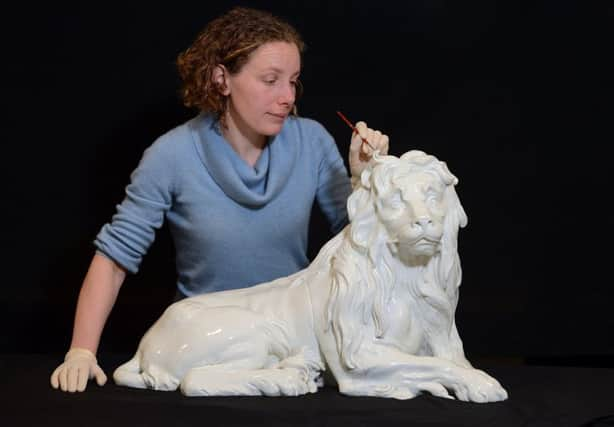Edinburgh venues worth over £½m every day


That equates to more than £500,000 every day.
Research commissioned for the first time into the value of the capital’s permanent arts infrastructure has found that it supports more than 5,100 jobs.
Some 6.2 million visitors were attracted into the capital’s main performing arts spaces, museums and galleries in 12 months, according to the Scottish Enterprise-funded study.
Advertisement
Hide AdThe research, which looked at organisations attracting more than 60,000 people a year, was commissioned by a new consortium of publicly funded venues formed to help raise awareness of their value and develop new joint initiatives.
Key players in the new body include the National Galleries of Scotland, National Museums Scotland, the Usher Hall and Queen’s Hall music venues, the Lyceum, Traverse, King’s and Festival theatres, and the Filmhouse cinema. They want to tackle fears that their success is “taken for granted” in some quarters.
The Edinburgh Culture Venues Group will replicate the model of Festivals Edinburgh, which was formed after a 2004 study into the value of the city’s major festivals found they were worth £184 million.
The latter body, which is about to publish a 10-year strategy to try to ensure Edinburgh remains the world’s leading festivals city, leads efforts to protect and enhance funding deals. The new research found the range of existing major venues in Edinburgh was “fundamentally important” to the city’s festivals and that they would be “seriously disadvantaged” without them.
However the venues insist their involvement in the festivals was only the “tip of the iceberg” of their contribution to the city’s cultural and tourism industries, with more than 6,000 separate performances staged over the course of 12 months.
The study, by Biggar Economics, which was said to be “focused on making a case for investment,” found that for each £1 in funding from backers such as the city council, Scottish Enterprise or Creative Scotland, there was a return of £4.62.
Advertisement
Hide AdIt included spending by visitors to venues on food, transport and accommodation, as well as spending by staff and performers.
The report states: “Festivals require venues and they also require an infrastructure of people and organisations to arrange them. Without Edinburgh’s cultural venues, the city would not have the capacity or the range of venues required to host major festivals.”
Advertisement
Hide AdDuncan Hendry, chief executive of the Festival and King’s theatres, who is also chairing the new consortium, said: “One of the major things we wanted to do was have a clear overall picture of what is happening in Edinburgh and celebrate that.
“There’s a whole range of knock-on benefits that come from Edinburgh having a vibrant cultural life. It’s also about being seen as a city that takes culture seriously.
“That’s really important, but perhaps some people in the city take it for granted to a certain extent. Part of what we’re doing is trying to shout about the great stuff that’s happening.”
Catherine Holden, director of external affairs at NMS, added: “Part of the purpose of the research was to try to understand the wider year-round marketplace.
“We all knew our own audiences well, but this was about seeing the impact we were having when we were all put together.
“There is rightly a lot of noise and attention about the festivals, which are such an amazing asset for the city, and a number of us are major venues for them. But they are actually the tip of the iceberg compared to everything else we are doing. It’s really good to be able to celebrate that as something that the city can be proud of all year round.
Advertisement
Hide Ad“In terms of developing our own audiences, or developing audiences for both Edinburgh and Scotland, we think there is lots of potential outside that really busy period in August. There is a real feeling of opportunity in terms of what investment in these venues can do.”